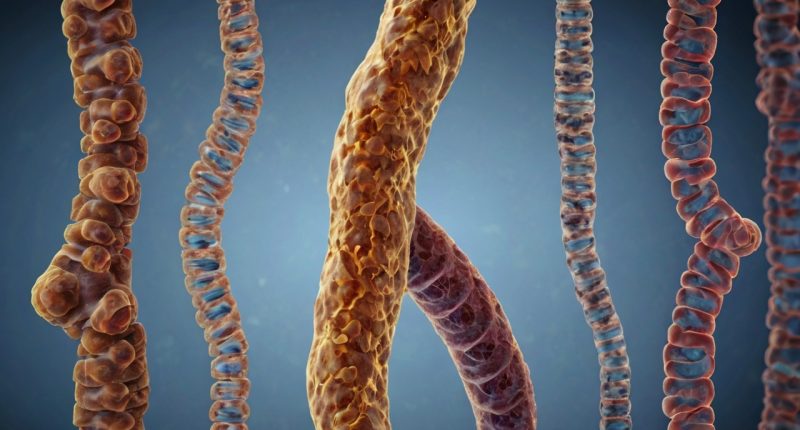Swyer Syndrome is a rare genetic condition that affects sexual development. Individuals with this syndrome typically possess XY chromosomes, which are usually male. However, they do not develop functioning testes or male reproductive organs. Instead, they often have female external genitalia and may identify as female. Understanding Swyer Syndrome is crucial for recognizing its implications on health and fertility, as well as the emotional and psychological aspects associated with living with this condition. In this article, we will explore the complexities of this syndrome and its impact on those affected.
Swyer Syndrome: An Overview of 46 XY Gonadal Dysgenesis
Swyer syndrome, a fascinating yet complex condition, presents itself in individuals with a 46 XY genetic makeup. Despite possessing male chromosomes, these individuals develop female physical characteristics due to gonadal dysgenesis. This anomaly occurs when the gonads (testes) do not develop properly, resulting in underdeveloped sexual organs. This is crucial for managing its implications on health and fertility. Here are some important things to consider:
- Genetic Factors: The absence of functional testicular tissue can lead to hormonal imbalances.
- Diagnosis: A diagnosis often requires karyotyping and hormonal evaluation.
- Treatment Options: Hormonal replacement therapy may be necessary for normal development.
Recognizing the nuances of this condition is essential. Individuals affected by this syndrome face unique challenges, particularly around identity and reproductive health.
Genetic Basis of Swyer Syndrome: Chromosomal Abnormalities Explained
Swyer syndrome arises from specific chromosomal abnormalities, particularly involving the sex chromosomes. In typical cases, individuals possess two X chromosomes or one X and one Y chromosome. However, those with this syndrome often have a unique configuration, such as a single X chromosome paired with a Y chromosome or just a missing Y chromosome. This misalignment causes the gonads to fail to develop and can lead to infertility.
Complete Androgen Insensitivity Syndrome is a condition where individuals have XY chromosomes but their bodies are unable to respond to androgens (male hormones), resulting in a female appearance. Mixed Gonadal Dysgenesis is a condition in which individuals have both ovarian and testicular tissue, leading to ambiguous genitalia and atypical development of secondary sexual characteristics.
The interplay between genetic factors is quite intricate. In some cases, mutations in the SRY gene, which is crucial for male sexual development, can mistakenly disrupt normal development. Consequently, these individuals may present with female external characteristics despite their genetic identity. Such complexities highlight how biology can challenge traditional views on gender and development.
| Genotype | Phenotype |
|---|---|
| 46,XY | Female external genitalia |
| 45,X | Underdeveloped gonads |
Clinical Manifestations: Recognizing the Symptoms of 46 XY Gonadal Dysgenesis
46 XY Gonadal Dysgenesis often presents with a myriad of symptoms that can be perplexing. Typically, individuals may not exhibit obvious physical characteristics at birth. This condition can lead to issues such as underdeveloped genitalia or ambiguous genitalia during adolescence. Furthermore, many people remain unaware of their condition until they experience delayed puberty. This situation can be particularly challenging, as emotional responses to sudden changes in one’s body may create added confusion. Regular medical evaluations are essential for early detection and management.
Diagnosis and Evaluation: How Swyer Syndrome is Identified
Identifying Swyer Syndrome can be intricate, as it often masquerades as other conditions. Initially, doctors might conduct a detailed physical examination and obtain a comprehensive history. Genetic testing is vital, revealing any anomalies in the sex chromosomes. Additionally, imaging studies, including ultrasounds, can provide insights into gonadal structures. Monitoring hormone levels is crucial, as discrepancies can suggest underlying issues. This multifaceted approach ensures no stone is left unturned in achieving an accurate diagnosis.
Key Diagnostic Steps
- Physical Examination: A thorough assessment to check for developmental characteristics.
- Genetic Testing: Identifies chromosomal deviations associated with the syndrome.
- Hormone Evaluation: Analyzes hormonal profiles for discrepancies that may indicate this syndrome.
Treatment Options for Swyer Syndrome: Addressing Hormonal and Surgical Needs
Swyer Syndrome presents unique challenges in managing hormonal and surgical aspects of health. Typically, individuals with this condition may require hormone replacement therapy to support the development of secondary sexual characteristics. This is crucial for aligning physical attributes with identity. Moreover, surgical intervention, such as gonadectomy, may be necessary to reduce cancer risk associated with undescended testes. It’s essential to approach these treatments holistically, considering the physical and emotional well-being of those affected.
Psychosocial Impacts of Swyer Syndrome: Navigating Identity and Support
Swyer Syndrome presents unique challenges that intertwine physical health with emotional well-being. Individuals often grapple with their identity, feeling an unsettling disconnection from societal norms related to gender. This struggle can lead to internal conflicts, creating layers of confusion. Support networks, both professional and personal, play crucial roles in mitigating these effects. They offer a space for individuals to explore their experiences, forging paths toward acceptance and resilience.
The Importance of Support Systems
Through engaging with supportive communities, individuals gain confidence in expressing their narratives. Such environments foster understanding, paving the way for stronger well-being.
Future Research Directions: Advancements in the Study of Swyer Syndrome
The future of Swyer Syndrome research holds significant promise. Scientists are delving deeper into the genetic underpinnings of this condition, aiming to unveil the mechanisms behind the development of gonadal dysgenesis. Such insights could pave the way for enhanced diagnosis and treatment options. Here are several potential research avenues:
- Genetic Profiling: Investigating the specific mutations involved in Swyer Syndrome may reveal patterns that can aid in early detection.
- Hormonal Therapies: Developing targeted hormonal treatments could improve the quality of life for individuals affected by this syndrome.
- Counseling and Support: Enhancing psychological support and counseling services can address the emotional challenges faced by individuals and families.
The Imane Khelif controversy continues at the 2024 Paris Olympic Games. It turned out that the Algerian boxer had the rare Swyer Syndrome.
The Olympic Committee made a statement on the issue. The statement reads: “All athletes participating in the Paris 2024 Olympic Games boxing tournament comply with all applicable medical regulations established by the Paris 2024 Boxing Unit (PBU), as well as the eligibility and entry regulations for the competitions. As in previous Olympic boxing events, the athletes’ gender and age are according to their passports.” The two athletes were suddenly disqualified towards the end of the IBA World Championships in 2023, without any due process. “Such an approach is contrary to good governance. Eligibility rules should not be changed while competitions are ongoing and any rule changes must follow appropriate processes and be based on scientific evidence.”
Who is Imane Khelif?
Imane Khelif, who came to the fore in the boxing match played with Italian female boxer Angela Carini at the Paris Summer Olympics, represented Algeria at the Tokyo 2020 Olympics. She was defeated and eliminated by Irish Kellie Harrington in the quarterfinals.
Italian boxer Angela Carini withdrew from the match against Algerian Imane Khelif in the 46th second of the women’s 66 kg last 16 round of boxing at the Paris 2024 Olympic Games. After Carini said she withdrew because she feared her nose would be broken during the match, the claim that Imane Khelif is biologically male sparked controversy in the public.
There is no reliable information from open sources regarding Algerian boxer Imane Khelif changing her gender, being in the process of gender reassignment or having a trans identity. There is no such statement in the news reflected in the press or in Khelif’s statements.
Boxer Khelif’s spokesperson Rosario Coco stated that the athlete did not undergo a gender transition as claimed. Coco stated that these events were due to Khelif being “born intersex.”
Frequently Asked Questions
What is Swyer syndrome?
Swyer syndrome is a rare genetic condition where an individual has an XY karyotype typically associated with male development but develops as a female due to non-functioning gonads.
How is Swyer syndrome diagnosed?
Diagnosis of Swyer syndrome usually involves genetic testing to identify the XY chromosome pattern and may also include imaging studies to assess the reproductive organs.
What are the symptoms of Swyer syndrome?
Individuals with Swyer syndrome may not have typical female reproductive structures, often presenting with primary amenorrhea and lack of breast development. They may be diagnosed during adolescence.
Can individuals with Swyer syndrome have children?
Individuals with Swyer syndrome typically have non-functional ovaries and cannot conceive naturally. However, options such as egg donation and surrogacy may be available.
What is the treatment for Swyer syndrome?
Treatment for Swyer syndrome usually involves hormone replacement therapy to develop secondary sexual characteristics and regular monitoring for potential health issues, such as the risk of gonadal tumors.





